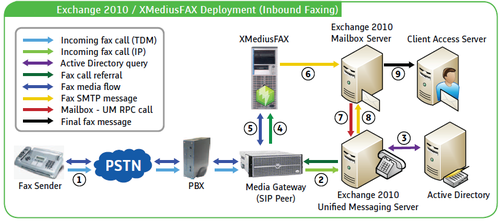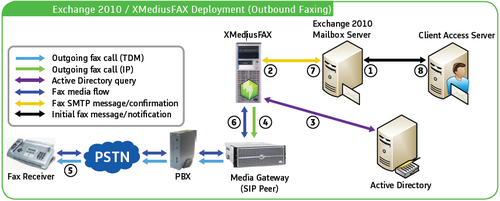There has been a premature rush to declare fax dead and the reality is fax is alive and while it is declining, it is still a strong business for companies helping the transition from fax to fax over IP and especially T.38. Yes, just as IP is transforming communications, the newspaper and television businesses, it is changing the way companies fax. And as you probably know, one of the primary reasons companies use this medium is to send legally binding documents quickly and efficiently.
One of the companies who have chosen partners wisely in the past is Sagem-Interstar, the Montreal based provider of fax solutions has had deep integration with Cisco’s products for a number of years and this relationship has obviously been good for the company.
More recently the company has announced it is supporting Microsoft Exchange Server 2010 and filling in a vital void in this new software’s unified communications capabilities. You see the next version of Exchange will not support fax natively so companies looking to upgrade must have a way to integrate fax to maximize productivity and of course take advantage of integrated communications. According to Sagem-Interstar, Microsoft contacted them in 2008 to address the challenge of adding IP fax to their new solution.
So yes, there is now MS Exchange 2010 Unified Messaging across all of the company’s XMediusFAX editions – SP, EE and X. There is inbound and outbound support and expect SIP TCP,TLS and SMTP TLS support. The company explains further that they have added what they call high value-added functions previously not available in Exchange 2007 UM server which consist of outbound faxing, process automation and fax archiving among others.
A typical configuration of XMediusFAX would behave as follows when receiving an inbound call:
A fax comes in over the PSTN and is translated to IP via the Media Gateway where it then reaches the Exchange 2010 UM server where a query is directed to Active Directory in order to determine if the user is provisioned for fax calls and moreover to determine the proper SIP address for call termination. At this point the call is established between the IP Media Gateway and XMediusFAX which receives the fax and archives it. It then sends an email with a TIF image and X-headers to the fax recipient via SMTP.
For complete details be sure to check out this PDF file from the company.
An outbound fax would be sent as follows based on the configuration above:
A user initiates a fax via Microsoft Outlook and Exchange server relays this message to XMediusFAX which does an Active Directory query to retrieve account information such as name, department and fax number. This is done to associate the user to a site and further validate the person’s credentials. XMediusFAX then converts the documents from attachments to TIF format, applies a cover page and proceeds to initiate an IP call via the Media Gateway. When the fax is sent, an email is sent to the user letting them know if the fax was sent or not.
While there are other companies looking to add full-featured fax solutions to Microsoft’s unified messaging/communications solutions, Sagem-Interstar has done an admirable job of working closely with both Cisco and Microsoft in an effort to continue its leadership position in T.38 IP fax.







